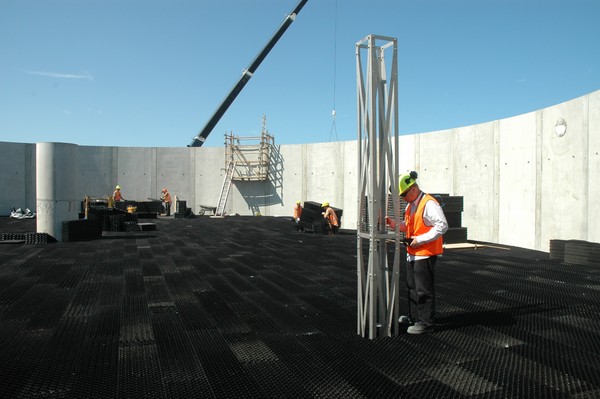Plastic media fitted inside filter tank

Eleven thousand black plastic blocks are quickly filling the giant biological trickling filter tank at the city’s new wastewater treatment plant in Banks Street.
The plastic media blocks – like big hay bales – will play an integral part in the process that transforms the city’s wastewater into plant-like matter.
From January 2011, screened and de-gritted wastewater will be pumped up through the tank’s central column to a height of eight metres. From here it will be distributed via six rotating arms to trickle slowly through many different channels of 10 layers of plastic media blocks. The layers of blocks run at right angles to each other and when fully installed will stand 6.1m high and occupy about 5000 cubic metres.
As the wastewater trickles through the channels, the fine solids remaining after the screening and de-gritting are converted into a non-offensive biomass in a process known as biotransformation.
Council project manager Peter McConnell said this would provide a much higher level of treatment than provided by the simple milliscreening process introduced 20 years ago.
“Treated wastewater will collect at the bottom of the trickling filter tank and be combined with industrial effluent, also milliscreened through 1mm mesh, in the new outfall pumping station. It will then be pumped through to connect into the existing outfall, and discharged 1.8km into the sea.”
Superchill Australia provided the plastic media sheets and Gisborne’s Electrinet welded these into bales. Each 300mm wide block, comprising 12 polypropylene sheets, measures 2.2m by 600mm.
Peter McConnell said one of the many advantages of this structured media was that sections could be lifted out to see exactly how much biofilm was growing on the media surface.
“The information gained from this can be used to fine tune the operation of the biological trickling filter.”